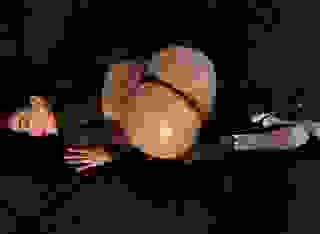Note: You can change font size, font face, and turn on dark mode by clicking the "A" icon tab in the Story Info Box.
You can temporarily switch back to a Classic Literotica® experience during our ongoing public Beta testing. Please consider leaving feedback on issues you experience or suggest improvements.
Click hereSee, the Russians in the post-Soviet era created a decent AEW&C craft the E&S gladly stole and copied the shit out of for their front line units and it was working quite nicely ~ the Beriev A-50, and WOW were the boys in the Kremlin pissed off about that these days. Whoops ... or was that woot?
Now, the Khanate was shipping two An-71's down to Cabinda and somewhere along the line someone just might get a 'feel' for the style of radar and jamming the Cabindans were using aka the Swedish stuff in those An-71's. The Erieye radar system could pick out individual planes at 280 miles. The over-all system could track 60 targets and plot out 10 intercepts simultaneously. NATO - they were not, but in sub-Saharan Africa, there were none better.
Anyway, so why was any of this important?
[**]
Why the old folks with their ancient machines? As revealed, since the Earth & Sky had no idea when Temüjin would return, they were constantly squirreling away equipment. World War II gave them unequaled access to Soviet military technology and training.
Afterwards, under Josef Stalin's direction, thousands of Russian and German engineers and scientists were exiled to Kazakhstan, Turkmenistan, Tajikistan, and Kyrgyzstan who were then snatched up (reportedly died in the gulags/trying to escape) and the E&S began building mirror factories modeled on the 'then current' Soviet production lines.
So, by the early 1950's, the E&S was building, flying and maintaining Soviet-style Antonov, Beriev, Ilyushin, Myasishchev, Mikoyan-Gurevich, Sukhoi, Tupolev and Yakovlev airplanes. First in small numbers because their pool of pilots and specialists was so small.
The E&S remedied this by creating both their own 'private' flight academies and technical schools. They protected their activities with the judicious use of bribes (they were REMARKABLY successful with their economic endeavors on both side of the Iron Curtain) and murders (including the use of the Ghost Tigers).
By 1960, the proto-Khanate had an air force. Through the next two decades they refined and altered their doctrine ~ moving away from the Soviet doctrine to a more pure combined-arms approach [the Soviets divided their air power into four separate arms ~ ADD (Long Range Aviation), FA (Front Aviation), MTA (Military Transport Aviation) and the V-PVO (Soviet Air Defenses ~ which controlled air interceptors).].
It wasn't until the collapse of the Soviet Union and the independence of the various former SSR's that the E&S program really began to hit its stride. Still, while Russia faltered, China's PLAAF (Peoples' Liberation Army Air Force) began to take off. Since the Chinese could produce so much more, the E&S felt it had to keep those older planes and crews up to combat readiness. The younger field crews and pilots flew the newer models as they rolled off the secret production lines.
Then the Unification War appeared suddenly, the E&S-turned Khanate Air Force skunked their PLAAF rivals due to two factors - a surprise attack on a strategic level and the fatal poisoning of their pilots and ground crews before they even got into the fight. For those Chinese craft not destroyed on the ground, the effects of Anthrax eroded their fighting edge. Comparable technology gave the Khanate their critical victory and Air Supremacy over the most important battlefields.
What did this meant for those out-of-date air crews and pilots who had been training to a razor's edge for a month now? Their assignment had been to face down the Russians if they invaded. They would take their planes up into the fight even though this most likely would mean their deaths, but they had to try.
When Operation Fun House put Russia in a position where she wasn't likely to jump on the Khanate, this mission's importance faded. The Russian Air Force was far more stretched than the Khanate's between her agitations in the Baltic and her commitments in the Manchurian, Ukrainian, Chechen and Georgian theaters.
With more new planes rolling off the production lines, these reservist units began dropping down the fuel priority list, which meant lowering their flight times thus readiness. Only my hare-brained scheme had short-circuited their timely retirement. Had I realized I was getting people's grandparents killed ... I would have probably made the same call anyway. We needed them.
[THE KHANATE]
The Khanate's #1 air superiority dogfighter was the Mig-35F. The #2 was the Mig-29. No one was openly discussing the Khanate's super-stealthy "Su-50" ... if that was what it was ... because its existence 'might' suggest the Khanate ALSO stole technology from the Indian defense industry ... along with their laundry list of thefts from South Korea, Japan, Taiwan, the PRC, Russia and half of NATO.
Her top multi-role fighters were the Su-47, Su-35S and Su-30SM. The Su-30 'Flanker-C/MK2/MKI were their 2nd team with plenty of 3rd team Su-27M's still flying combat missions as well.
Strike fighters? There weren't enough Su-34's to go around yet, so the Su-25MS remained the Khanate's dedicated Close Air Assault model.
Medium transport aircraft? The An-32RE and An-38. They had small, large and gargantuan transports as well.
Bombers? The rather ancient jet-powered Tu-160M2's and Tu-22M2's as well as the even older yet still worthwhile turboprops ~ from 1956's ~ the Tu-95M S16.
Helicopters? While they still flew updated variants of the Mil Mi-8/17 as military transports, the more optimized Kamov Ka-52 and Mil Mi-28 had replaced them in the assault role.
Bizarrely, the Khanate had overrun several Chinese production lines of the aircraft frames and components ~ enough to complete fairly modern PLAAF (Peoples Liberation Army Air Force) FC-1 and J-10 (both are small multi-role fighter remarkably similar to the US F-16 with the FC-1 being the more advanced model, using shared Chinese-Pakistani technology and was designed for export ...).
They did have nearly two dozen to send, but they didn't have the pilots and ground crews trained to work with them, plus the FC-1 cost roughly $32 million which wasn't fundage any legitimate Cabindan rebels could get their hands on, much less $768 million (and that would just be for the planes, not the weeks' worth of fuel, parts and munitions necessary for what was forthcoming).
Meanwhile, except for the An-26, which you could get for under $700,000 and the An-71, which were only rendered valuable via 'black market tech', none of the turboprop and jet aircraft the Khanate was sending were what any sane military would normally want. The helicopters were expensive ~ the 'new' models Mi-24's cost $32 million while the Mi-17's set you back $17 million. The one's heading to Cabinda didn't look 'new'.
[THE OPPOSITION]
In contrast, the Angolan Air Force appeared far larger and more modern. Appearances can be deceptive ... and they were. Sure, the models of Russian and Soviet-made aircraft they had in their inventory had the higher numbers ~ the Su-25, -27 and -30 ~ plus they had Mig-21bis's, Mig-23's and Su-22's, but things like training and up-keep didn't appear to be priorities for the Angolans.
When you took into account the rampant corruption infecting all levels of Angolan government, the conscript nature of their military, the weakness of their technical educational system, the complexity of any modern combat aircraft and the reality that poor sods forced into being Air Force ground crewmen hardly made the most inspired technicians, or most diligent care-takers of their 'valuable' stockpiles (which their officers all too often sold on the black market anyway), things didn't just look bleak for the Angolan Air Force - they were a tsunami of cumulative factors heading them for an epic disaster.
It wasn't only their enemies who derided their Air Force's lack of readiness. Their allies constantly scolded them about it too. Instead of trying to fix their current inventory, the Angolans kept shopping around for new stuff. Since 'new'-new aircraft was beyond what they wanted to spend (aka put too much of a dent in the money they were siphoning off to their private off-shore accounts), they bought 'used' gear from former Soviet states ~ Belarus, Russia and Ukraine ~ who sold them stuff they had left abandoned in revetments (open to the elements to slowly rot) on the cheap.
To add to the insanity, the Angolans failed to keep up their maintenance agreements so their newly fixed high-tech machines often either couldn't fly, or flew without critical systems - like radar, avionics and even radios. Maybe that wasn't for the worst because after spending millions on these occasionally-mobile paperweights, the Angolans bought the LEAST technologically advanced missile, gun and rocket systems they could get to put on these flying misfortunes.
On the spread sheets, Angola had 18 Su-30K's, 18 Su-27, 12 Su-25's, 14 Su-22's, 22 Mig-23's, 23 Mig-21bis's and 6 Embraer EMB 314 Super Tucano (a turboprop aircraft tailor-made for counter-insurgency operations), 105 helicopters with some combative ability and 21 planes with some airlift capacity. That equated to 81 either air superiority, or multi-role jet fighters versus the 12 Union Air Force (actually the Bakongo União de Cabinda e Zaire - Forças Armadas de Libertação - Força Aérea ~ Liberation Armed Forces - Air Force [BUCZ-FAL-FA]) Mig-21-97's.
It would seem lopsided except for the thousands of hours of flight experience the 'Unionists' enjoyed over their Angolan rivals. You also needed to take into account the long training and fanatic dedication of their ground crews to their pilots and their craft. Then you needed to take into account every Unionist aircraft, while an older airframe design, had updated (usually to the year 2000) technology lovingly cared for ... as if the survival of their People demanded it.
A second and even more critical factor was the element of surprise. At least the PRC and the PLAAF had contingencies for attacks from their neighbors in the forefront of their strategic planning. The Angolans? The only country with ANY air force in the vicinity was the Republic of South Africa (RSA) and they had ceased being a threat with the end of Apartheid and the rise of majority Black rule in that country nearly two decades earlier.
In the pre-dawn hours of 'Union Independence Day', the FAL-FA was going to smash every Angolan Air base and air defense facility within 375 miles of Cabinda (the city). Every three hours after that, they would be hitting another target within their designated 'Exclusion Zone'. Yes, this 'Exclusion Zone' included a 'tiny' bit of DRC (Democratic Republic of Congo) territory. The DRC didn't have an air force to challenge them though ... so ...
Inside this 'Exclusion Zone', anything moving by sea, river, road, rail, or air without Unionist governmental approval was subject to attack ... which would require neutral parties to acknowledge some semblance of a free and independent BUCZ. Worse for Angola, this 'Zone' included Angola's capital and its largest port, Luanda, plus four more of their ten largest urban centers. This could be an economic, military and humanitarian catastrophe if mishandled.
The Angolan Army did not have significant anti-aircraft assets. Why would they? Remember, no one around them had much of an air force to worry about. The FAL-FA in turn could hit military convoys with TV-guided munitions 'beyond line of sight', rendering what they did have useless. It got worse for the Army after dark. The FAL-FA could and would fly at night whereas the average Angolan formation had Zip-Zero-Nadda night fighting capacity.
Then geography added its own mountain of woes. As far as Cabinda was concerned, there was no direct land line to their border from Angola. Their coastal road only went as far as the port of Soyo where the Congo River hit the South Atlantic Ocean. Across that massive gap was the DRC where the road was not picked back up. Far up the coast was the DRC town of Muanda (with an airport) and though they did have a road which went north, it did not continue to the Cabindan border.
Nope. To get at Cabinda from the south meant a long, torturous travel through northeastern Angola, into the heart of the DRC then entailed hooking west to some point 'close' to the Cabindan frontier before finally hoofing it overland through partially cleared farmland and jungle. Mind you, the DRC didn't have a native air force capable of protecting the Angolans in their territory so ...
In fact the only 'road' to Cabinda came from the Republic of Congo (Congo) to the north and even that was a twisted route along some really bad, swampy terrain. This had been the pathway of conquest the Angolans took 39 years earlier. The difference being the tiny bands of pro-independence Cabindan guerillas back then couldn't hold a candle to the Amazons fighting to free Cabinda this time around in numbers, zeal, training and up-to-date equipment.
Next option ~ to come by sea. They would face a few, stiff problems ... such as the FAL-FA having ship-killer missiles, the Angolan Navy not being able to defend them and the Unionists having no compunction to NOT strike Pointe-Noire in the 'not so neutral' Republic of the Congo if they somehow began unloading Angolan troops. It seemed the Republic of the Congo didn't have much of an Air Force either.
Before you think the FAL-FA was biting off more than they could chew, Cabinda, the province, was shaped somewhat like the US State of Delaware, was half the size of Connecticut (Cabinda was 2,810 sq. mi. to Conn.'s 5,543 sq. mi.) and only the western 20% was relatively open countryside where the Angolan Army's only advantage ~ they possessed armed fighting vehicles while the 'Unionists' did not (at this stage of planning) ~ could hopefully come into play.
Centered at their capital, Cabinda (City), jets could reach any point along their border within eight minutes. Helicopters could make it in fifteen. To be safe, some of the FAL-FA would base at the town of Belize which was in the northern upcountry and much tougher to get at with the added advantage the Angolans wouldn't be expecting the FAL-FA to be using the abandoned airfield there - at least initially.
Where they afraid attacking Angolan troops in the DRC would invite war with the DRC? Sure, but letting the Angolans reach the border unscathed was worse. Besides, the DRC was in such a mess it needed TWENT-THREE THOUSAND UN Peacekeepers within her borders just to keep the country from falling apart. Barring outside - read European - intervention, did "Democratically-elected since 2001" President (for Life) Joseph Kabila want the FAL-FA to start dropping bombs on his capital, Kinshasa - which was well within reach of all their aircraft?
Congo (the country), to the north, wasn't being propped up by the UN, or anything else except ill intentions. In reality, it hardly had much of a military at all. Its officer corps was chosen for political reliability, not merit, or capability. Their technology was old Cold War stuff with little effort to update anything and, if you suspected corruption might be a problem across all spectrums of life, you would 'probably' be right about that too.
If you suspected the current President had been in charge for a while, you would be correct again (1979-1992 then 2001- and the 'whoops' was when he accidently let his country experiment with democracy which led to two civil wars). If you suspected he was a life-long Communist (along with the Presidents of the DRC and Angola), you'd be right about that as well. Somehow their shared Marxist-Leninist-Communist ideology hadn't quite translated over to alleviating the grinding poverty in any of those countries despite their vast mineral wealth ...
At this point in the region's history, little Cabinda had everything to gain by striving for independence and the vast majority of 'warriors' who could possibly be sent against her had terribly little to gain fighting and dying trying to stop them from achieving her goal. After all, their lives weren't going to get any better and with the Amazons ability ~ nay willingness ~ to commit battlefield atrocities, those leaders were going to find it hard going to keep sending their men off to die.
And then ... it got even worse.
See, what I had pointed out was there were two oil refineries in Angola ... and neither was in Cabinda. Cabinda would need a refinery to start making good on their oil wealth ~ aka economically bribe off the Western economies already shaken over the Khanate's first round of aggressions.
But WAIT! There was an oil refinery just across the Congo River from Cabinda ~ which meant it was attached to mainland Angola. That had to be a passel of impossible news, right?
Nope. As I said earlier, it seemed the people of northern Angola were the same racial group as the Cabindans AND majority Catholic while the ruling clique wasn't part of their ethnic confederacy plus the farther south and east into Angola you went, the less Catholic it became.
But it got better. This province was historically its own little independent kingdom (called the Kingdom of Kongo) to boot! It had been abolished by Portugal back in 1914.
The 'good' news didn't end there. Now, it wasn't as if the leadership of Angola was spreading the wealth around to the People much anyway, but these northerners had been particularly left out of this Marxist version of 'Trickle Down' economics.
How bad was this? This northwestern province ~ called Zaire ~ didn't have any railroads, or paved roads, linking it to the rest of the freaking country. The 'coastal road' entered the province, but about a third of the way up ran into this river ... which they'd failed to bridge [you had to use a single track bridge farther to the northeast, if you can believe it]. It wasn't even a big river. It was still an obstacle though.
How did the Angolan government and military planned to get around? Why by air and sea, of course. Well, actually by air. Angola didn't have much of a merchant marine, or Navy, to make sealift a serious consideration. Within hours of the 'Union Declaration of Independence' anything flying anywhere north of the Luanda, the capital of Angola, would essentially be asking to be blown out of the sky.
Along the border between Zaire province and the rest of Angola were precisely two chokepoints. By 'chokepoints', I meant places where a squad (10 trained, modernly-equipped troopers) could either see everything for MILES AND MILES over pretty much empty space along a river valley and the only bridge separating Zaire province from the south, or overlook a ravine which the only road had to pass through because of otherwise bad-ass, broken terrain.
Two.
Zaire Province had roughly the same population as Cabinda ~ 600,000. Unlike Cabinda, which consisted of Cabinda City plus a few tiny towns and rugged jungles, Zaire had two cities ~ Soyo, with her seventy thousand souls plus the refinery at the mouth of the Congo River, and M'banza-Kongo, the historical capital of the Kingdom of Kongo, spiritual center of the Bakongo People (who included the Cabindans) and set up in the highlands strategically very reminiscent of Điện Biên Phủ.
Of Zaire's provincial towns, the only other strategic one was N'Zeto with her crappy Atlantic port facility and 2,230 meter grass airport. The town was the northern terminus of the National Road 100 ~ the Coastal Road. It terminated because of the Mebridege River. There wasn't a bridge at N'Zeto though there was a small one several miles upstream. N'Zeto was also where the road from provinces east of Zaire ended up, so you had to have N'Zeto ~ and that tiny bridge ~ to move troops overland anywhere else in Zaire Province.
So you would think it would be easy for the Angolan Army to defend then ... except of how the Amazons planned to operate. They would infiltrate the area first then 'rise up in rebellion'. Their problem was the scope of the operation had magnified in risk of exposure, duration and forces necessary for success.








